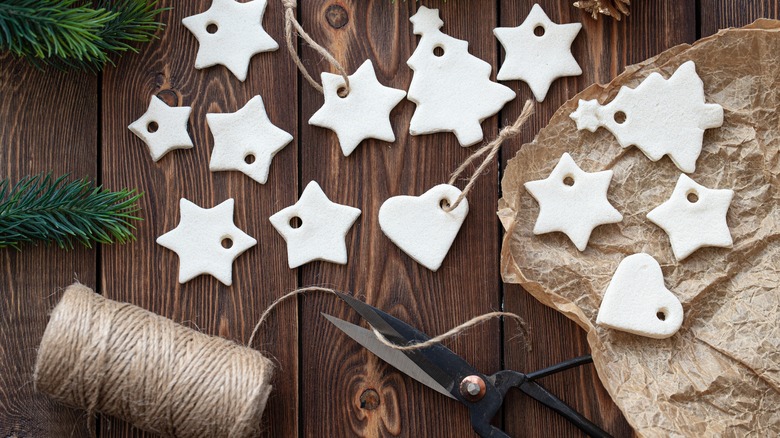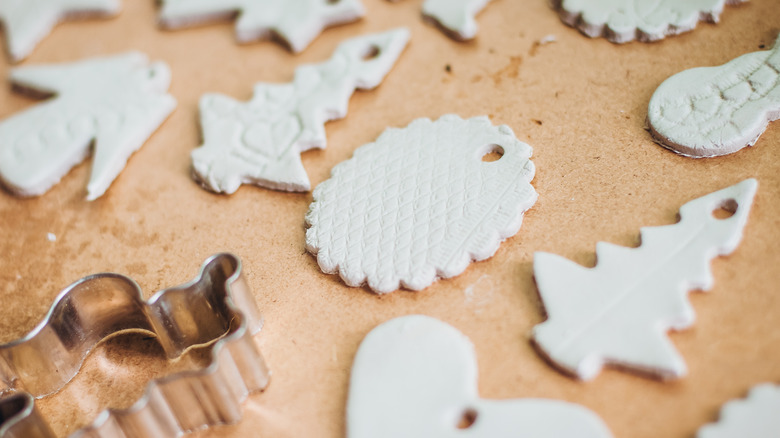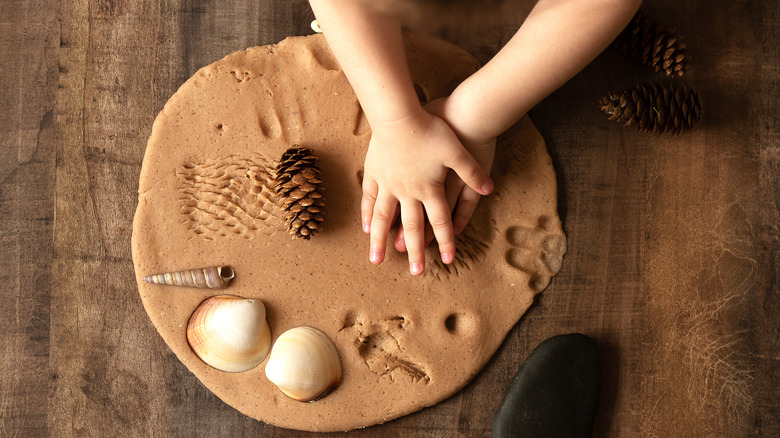Mistakes Everyone Makes When DIYing Salt Dough Christmas Tree Ornaments
Salt dough ornaments are a classic Christmas craft that most DIYers have probably tried or come across on Pinterest when looking for Christmas crafts. They're an inexpensive and fully customizable way to decorate the tree. You can imprint them with handprints or pawprints, paint them, and shape them into anything you'd like, making them the perfect way to put some personality on the tree. Though they're a simple project, drying them incorrectly is a common problem. Allow them to air dry before baking them, and make sure your oven isn't too hot. Using the incorrect proportions of ingredients can also cause them to crack and eventually break.
Salt dough is just flour, water, and salt, though you can add cinnamon to make brown dough. You might think these simple ornaments wouldn't hold up for more than a few years, but the blogger at Ornaments For Keeps shows a photo of some they made in the 1980s. When you use the right dough, baking technique, and sealant, you can have homemade ornaments that will stay in the family for years to come.
Drying incorrectly
It's frustrating to have spent so much time perfecting your salt dough ornament only for it to lose its shape in the oven. According to Art Sprouts, allowing the dough to air dry for a half-hour will allow the outer layer to dry enough so that it won't lose its shape while baking. Salt dough can puff up in the oven, but letting it develop a dry layer before putting it in can prevent this from happening.
A big reason salt dough goes puffy is that the oven is too hot. Low and slow is the key to perfect ornaments, so let your oven sit at a cool but warm temperature for several hours rather than a hot temperature for an hour. The Rainy Day Mum blog recommends 167 degrees Fahrenheit, while Art Sprouts recommends 250 degrees Fahrenheit. You may need to do a test run to see how low is low enough since all ovens are different.
Using the wrong proportions and ingredients
Make sure you use the correct ingredients before you start making ornaments. Self-rising flour will puff up in the oven, so make sure you're using all-purpose flour. Coarse salt will affect the smoothness of your dough. If you don't mind an uneven, rustic look, then you should be fine using coarse salt. However, if you want a smooth surface, use the finest granules you can find. You can grind up salt in a blender to make it powder for the ultimate smooth finish.
Proportioning the ingredients is just as important as choosing the right ones. Most recipes will have equal parts salt and flour or half the amount of salt. This is because salt is a great preservative; lots of salt will help it dry out and stay mold-free for years. When you're mixing the dough, you can eyeball how much water you need since it's all about feel, though you should follow what the recipe says just to be safe. The dough should be easy to knead and not sticky. If it's too sticky, add more salt and flour, if it's hard, knead it and add a little more water.


